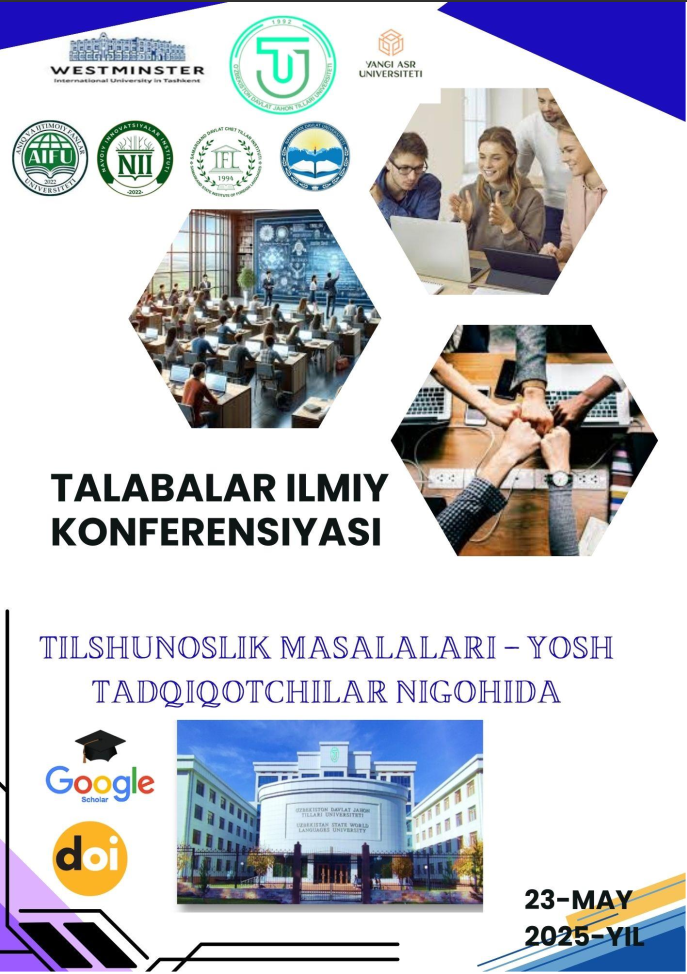IMPLEMENTING LITERATURE IN ENGLISH LANGUAGE ACQUISITION
https://doi.org/10.5281/zenodo.15517306
Kalit so‘zlar
student-centered, survey, literature, ESL classroom, and exploresAnnotasiya
The goal of this study is to carefully review and compile the corpus of research, practices, and pedagogical approaches related to teaching literary texts. The study aims to examine the benefits of literature as a means of fostering students' critical thinking, empathy, and as well as cultural expertise. It would also attempt to evaluate a variety of teaching strategies, including as discussion-based learning, creative projects, and technological integration, in order to identify the best techniques for involving a diverse student body. Along with offering recommendations for the most effective ways to teach literature to promote a love of reading and improve literacy in the classroom, the evaluation also attempts to draw attention to the challenges faced by educators, such as balancing curriculum requirements and dealing with varying reading levels.
Foydalanilgan adabiyotlar ro‘yhati
Abulkasimovna, E. Z., & Leonidovna, M. N. (2023, March). THE LEXICAL-SEMANTICAL USAGE OF PROFESSIONAL LEXEMES IN “UTGAN KUNLAR”(" PAST DAYS") BY ABDULLA QADIRI. In International Scientific and Current Research Conferences (pp. 20-22).
Ali, S. (1994). The reader-response approach: An alternative for teaching literature in a second language. Journal of Reading, 37, (4), 288-296.
Amer, A. (2003). Teaching EFL/ESL literature. The Reading Matrix, 3 (2), 63-73.
Arthur, B. (1968). Reading literature and learning a second language. Language learning, XVIII, 199-210.
Borg.W.R & Gall.M.D. (1989). Educational Research: An Introduction 5thedition. New York. Longman Cland field, Lindsay. “Teaching Materials using Literature in the ESL/EFL Classroom”
Brown, J. (2021). The Role of AI in Educational Contexts: Literature and Practice. Journal of Educational Technology.
Brumfit, C.J., & Carter, R.A. (1986). Literature and language teaching. Oxford: Oxford University Press.
Carlisle, A. (2000). Reading logs: an application of reader-response theory in EFL. ELT Journal, 54, (1) 12-19.
El Agez, B., & Rashidova, G. I. (2024). Authentic materials for teaching writing: a critical look. O ‘zbekiston davlat jahon tillari universiteti konferensiyalari, 21-30.
Gulomova, R. (2017). The importance of fairy tales in teaching English as a second language. Архивариус, 1(2 (17)), 27-29.
R. P. Boas. (1931)“The Study and Interpretation of Literature,” Harcourt: Brace and Company Inc., 1931.
SULTONOVA, M. (2024). On the issue of critical thinking.

